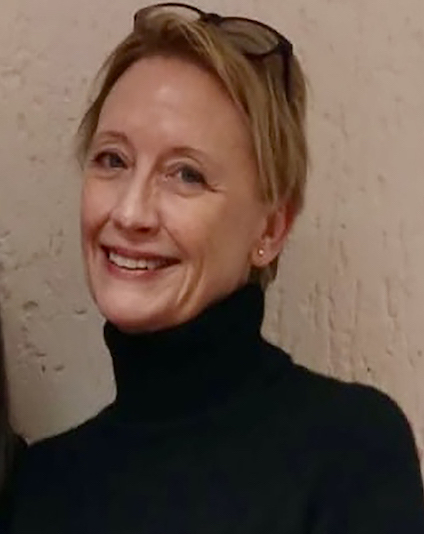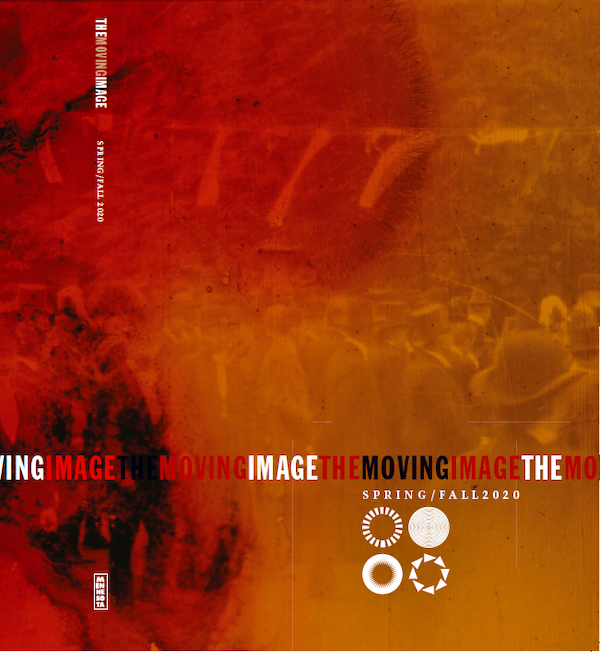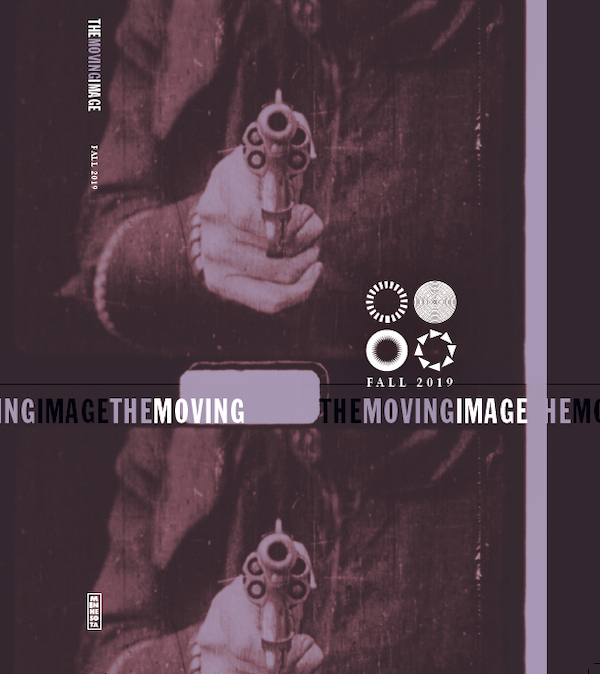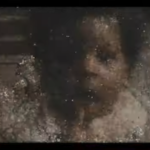The Moving Image at the Borderlands

The Moving Image, the peer-reviewed journal of the AMIA — Association of Moving Image Archivists — is planning a special issue on the theme of Borders and Boundaries.
Just what does that theme entail, when it comes to all things moving image?
Moving Image Archive News asked the co-editor of the issue, Jennifer Jenkins, who is a professor of literature, film, and archival studies at the University of Arizona. There, she is also a research social scientist at The Southwest Center, and director of the Bear Center for Southwest Humanities, two scholarly centers for the study of the American Southwest and Mexican Northwest region.
The journal’s call for submissions states broadly that contributions may be traditional scholarly papers, historical essays, or other kinds of writing, or even “moving image constructs” about the moving image in “literal, metaphorical, or filmic borderlands,” anywhere on the globe — “contact zones, third spaces, and fluid identities of humans and moving images in liminal spaces.”
To provide a sense of what might work for the issue, Jenkins and the journal’s longer-term editors provide some teasers. They say the work might be, for example,
— in-depth examinations of specific preservation and restoration projects on, across, or near geographical borders and moving image media boundaries;
— detailed profiles of moving image collections or archives in border regions;
— interviews with leading figures in borderlands moving image archives communities;
— reviews of border and boundary themed film festivals, conferences, or exhibits;
— theoretical and visionary articles on the future of decolonizing the moving image archiving field;
— ethics of restoration and preservation efforts in border communities;
— the study of border, transnational, and transcultural home movies and other nontheatrical forms;
— intellectual property restrictions, including questions of image sovereignty, affecting preservation affecting preservation and access to archival moving images;
— emergent genre definitions within under-represented visual cultures.
Jenkins and her colleagues clearly would like not to impose narrow borders around submissions. Among their other teasers:
— “moving image constructs of liminality, fluidity and/or boundedness or boundlessness.”
— “technical and practical articles on research and development in the field as it relates to borders, even of the film frame itself.”
Frankly, going just by all those prompts, The Moving Image’s special issue is fascinating even before it has been written.
Borders and Boundaries special issue of The Moving Image. Submissions due 18 October, 2021, to Jennifer Jenkins at jenkinsj@arizona.edu, copied to Devin Orgeron at editor@themovingimage.org. Book, media, and conference reviews should go to Brian Real (realb1@southernct.edu). The editors ask that contributors specify which section of The Moving Image their work should be considered for: Features (double-blind peer-reviewed research articles of 4,000-6,000 words), Forum (shorter and less formal e.g. interviews and notes from the field), or Collections (a new section for collection profiles). Other details, such as required formatting, are on the journal’s website.
Here’s what Jennifer Jenkins says about it.
MIAN: How did this special issue come to be?
 Jennifer Jenkins: A little background/context: When (in 2019) AMIA were planning for the usual fall conference for 2020, they chose El Paso, Texas as the conference location. The Board secured funding for the Borderlands stream from the National Film Preservation Board, and Melissa Dollman invited me to co-curate, based on the Southwestern location, and my work in borderlands ephemeral cinema here in Arizona. Together, we developed a stream of linked sessions on the theme of “Borders and Borderlands.” Melissa had just completed her Ph.D. and will join me as co-editor on the special issue that grew out of that stream.
Jennifer Jenkins: A little background/context: When (in 2019) AMIA were planning for the usual fall conference for 2020, they chose El Paso, Texas as the conference location. The Board secured funding for the Borderlands stream from the National Film Preservation Board, and Melissa Dollman invited me to co-curate, based on the Southwestern location, and my work in borderlands ephemeral cinema here in Arizona. Together, we developed a stream of linked sessions on the theme of “Borders and Borderlands.” Melissa had just completed her Ph.D. and will join me as co-editor on the special issue that grew out of that stream.
The Fall 20 conference was shifted online due to the pandemic, and the stream was shifted to the new addition of a spring conference. That Spring 2021 stream was the impetus for the special issue of The Moving Image. In developing that prospectus, Editor in Chief Devin Orgeron and I decided to open out the topics to “Borders and Boundaries” to include a broader cultural reading of demarcation and delineation. The thinking was always about the thematics of borders as well as the implications of bordering for all aspects of moving image archiving, from the borders of the film frame to the complexities of transnational collections.
In extending to “boundaries,” we invite contemplations of the meanings of crossing, transiting, aligning, and realigning in relation to the filmscape in its broadest sense.
Is this an area of research and collaboration that is itself exploring what its own territory and boundaries can be?
I’d love to think that this is a developing area in archival theory as well as in border studies. The intersections between the two discourses are quite rich. Not so many people work across those disciplines, so we need to encourage folks in both areas to think broadly about the implications and possible collaborations.
What are a couple of examples of particularly suggestive areas of research you’ve seen, so far, when it comes to throwing light on these sorts of issues, perhaps from that Spring 2021 stream? How do they illustrate that there’s benefit and interest in moving-image related projects that straddle geographical, ideological, and other borders and boundaries?
 Certainly, profound relocations of positionality emerged from the session presentations. One of the presentations was about travel filmmakers taking Inuit art from the arctic circle to Canada’s southern border, a simple geographical statement that makes US people rethink notions of North and South. We were lucky to pair that talk with one on newly recovered Argentine Antarctic exploration film. Reminding our membership and readership that film wraps the globe longitudinally as well as latitudinally can only lead to interesting ways to trouble the practice of categorization and archiving, and maybe unsettle the Mercator projection a bit.
Certainly, profound relocations of positionality emerged from the session presentations. One of the presentations was about travel filmmakers taking Inuit art from the arctic circle to Canada’s southern border, a simple geographical statement that makes US people rethink notions of North and South. We were lucky to pair that talk with one on newly recovered Argentine Antarctic exploration film. Reminding our membership and readership that film wraps the globe longitudinally as well as latitudinally can only lead to interesting ways to trouble the practice of categorization and archiving, and maybe unsettle the Mercator projection a bit.
Similarly, the US-Mexico border holds a different place spatially in the two nations. El Paso is in the US Southwest, but in the Mexican Northwest: when seen from the US, Pancho Villa’s identity as a northern folk hero completely inverts to that of a southern bandit. The really suggestive work upends geographical boundaries as well as those of photochemical and magnetic media as well as film form and representation: both form and content. Of course, moving image archives deal with both.
That said, geography is not and should not be the sole defining criterion for thinking about borders and boundaries. A provocative early proposal for the special issue involves representations of early Trans history (mid 19th century to early 20th century) and the presence of what we now understand as trans/gender nonbinary identity in newsreels, amateur cinema, etc. This is precisely the kind of boundary-testing work I’m hoping the special issue will elicit.
You live and work in a part of the world, Arizona, where borders and international interactions raise complex and vexed issues and dynamics. Are there particular archiving and moving image projects, issues, or dimensions where you are, that are particularly productive and suggestive?
Thank you for the graceful and polite understatement about Arizona [chuckle].
There is a lot of citizen and witness video being shot along the border by documenters ranging from crossers to human rights workers on both sides, to border patrol and Mexican constabulary — all for different purposes, of course. Crossers may document their journey for folks back home, for example; that kind of personal video diary is wholly apart from the need for documentation of legal and extralegal processes these people encounter if apprehended.
There is an ever-growing need for an active collecting institution or repository to effect an easy upload interface to secure those stories for now and the future. The ways in which citizen video was collected and archived in Ferguson, MO could be a model. If there is such a project along the US southern border, I’m not aware of it. It’s a huge topic, and certainly there are discrete, localized projects that focus on a piece of the story (for example, the Documented Border project at my own university). The fact that four states, each with their distinct politics, line our southern borders makes a centralized archive-site something of an unwieldy challenge. But that’s no reason not to do it!
In terms of historical records and recovery of border voices, there are exciting projects emerging, such as C. Diaz’s Rio Grande Valley home movie project. In Arizona, we also have the Tombstone Home Movie project. Both of these efforts look at Mexicano-Chicano (they wouldn’t have used the terminal “x” in the ’50s and ’60s) amateur filmmaking and contain valuable documentation of daily life and activities in border towns.
 For your special issue of The Moving Image, what kinds of contributions do you anticipate receiving, or are you hoping to get, given what you’ve noticed is out there among archivists and researchers? Is the special issue of The Moving Image prompted by knowing that this is an area of research and collaboration that is particularly active and interesting, or perhaps just emerging?
For your special issue of The Moving Image, what kinds of contributions do you anticipate receiving, or are you hoping to get, given what you’ve noticed is out there among archivists and researchers? Is the special issue of The Moving Image prompted by knowing that this is an area of research and collaboration that is particularly active and interesting, or perhaps just emerging?
Thank you for asking! I’m not at all sure what we will receive in terms of submissions, and that’s one of the reasons for the special issue: to see what kinds of work and collections and projects are out there. It’s definitely/hopefully an emerging field!
That’s one purpose (though not the only) of The Moving Image: to serve as a kind of clearinghouse and information resource to highlight lesser-known or unseen work. So many of our colleagues are ‘toiling in the vineyards‘ and we aren’t always aware of what they’re doing. With the three different types of submissions called for — research-based Features; shorter case studies, think-pieces, interviews, and the like in the Forum; and the new area of Collections descriptions and overviews — I’m hoping that people can find a comfortable place to share their work. We know there are amazing discoveries and projects out there (that is the nature of AMIA), and this special issue on Borders and Boundaries will afford us a 2021 snapshot of the field. My hope is that it will serve as a record of this moment in time, as well as a stimulus to our membership going forward to take these provocative possibilities and run with them.
Previous Post: From Crossroads to Godzilla
Next Post: The Game Cabinets of Youth




